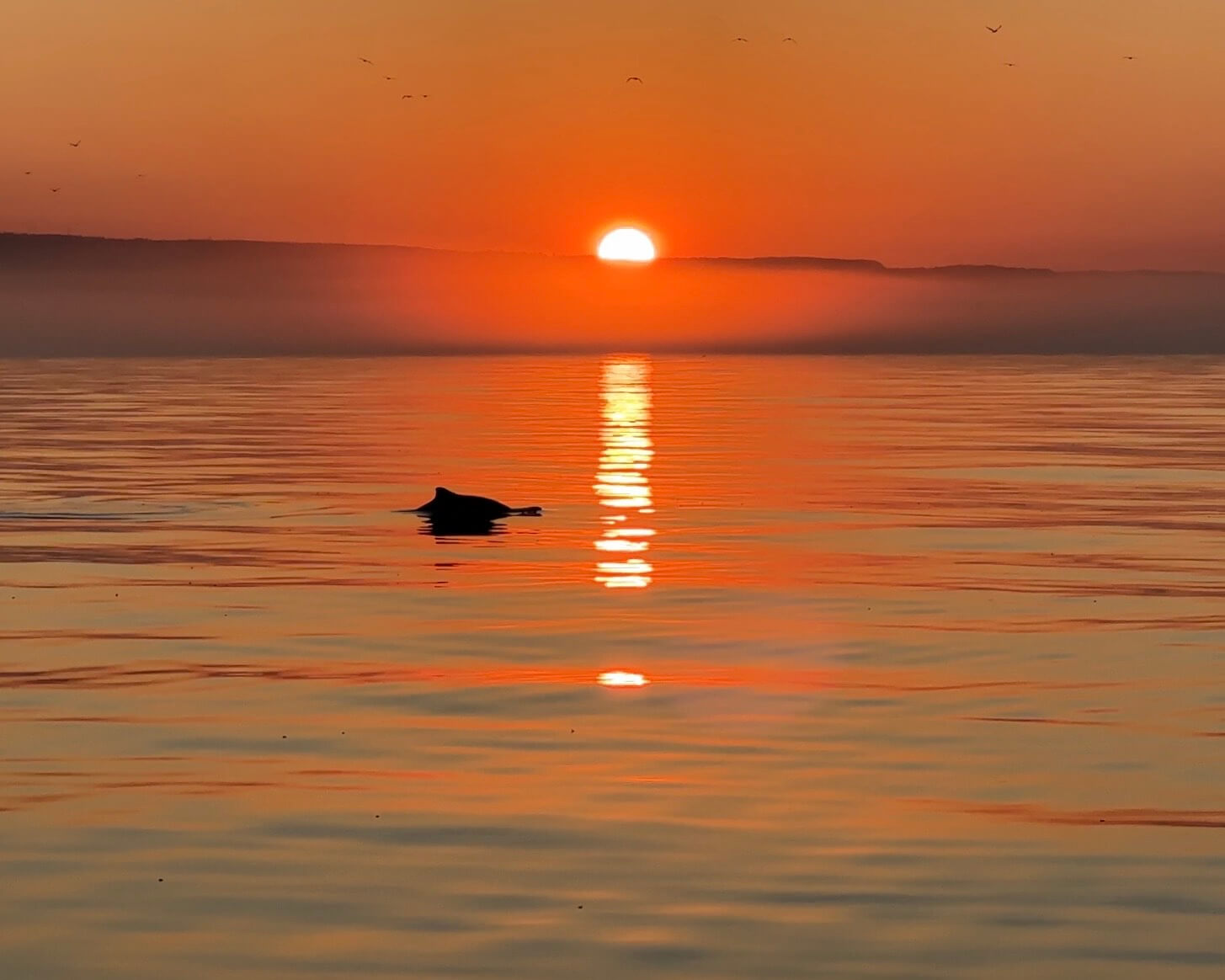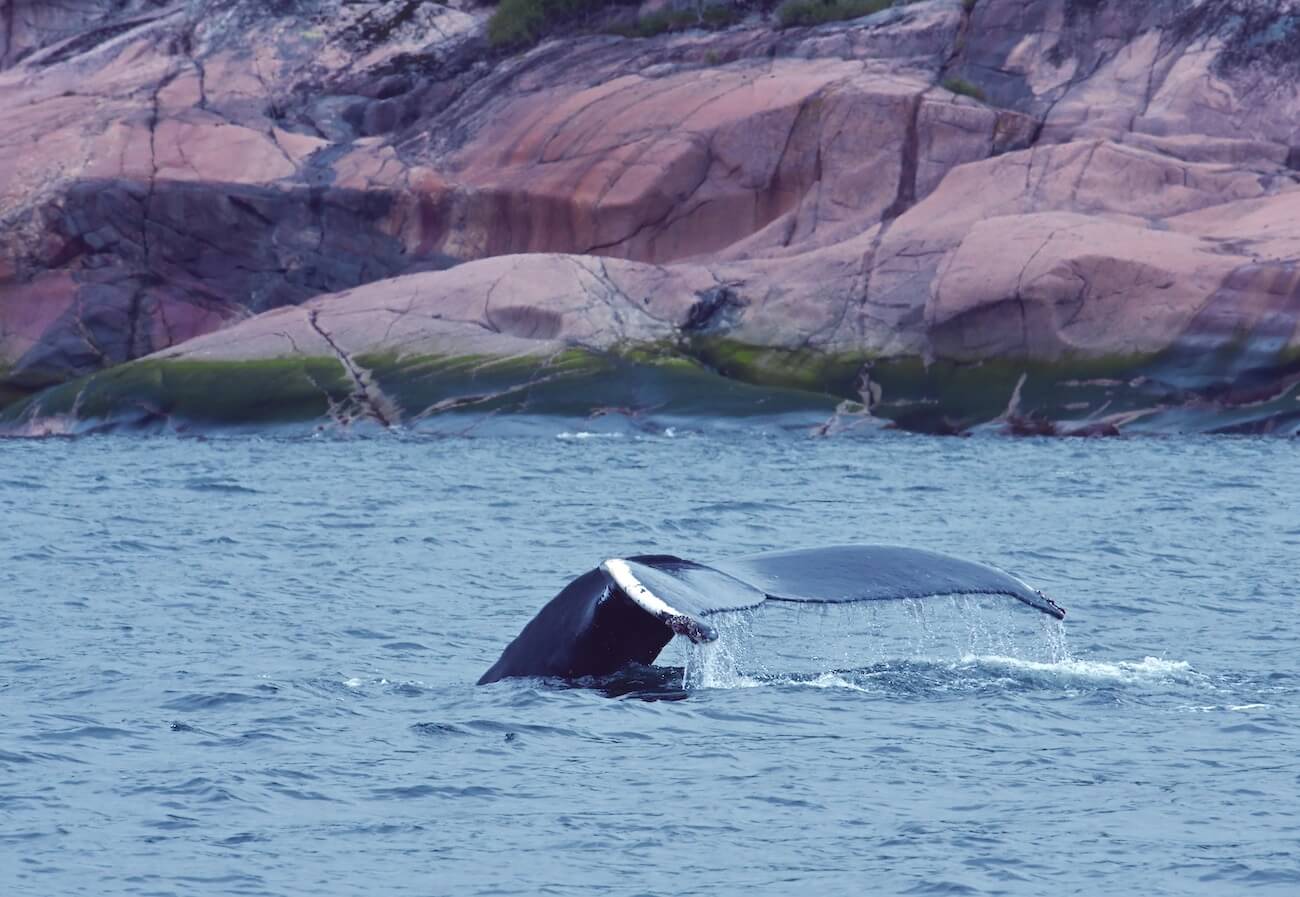By Olivia Capeillere
As we enter into early fall, observers everywhere along the St. Lawrence Estuary and Gulf have been pleasantly surprised by the constant presence of humpback whales and other marine mammals and seabirds!
On Tuesday, at the tip of Cap Gaspé, it was rorqual mania, with one blue whale, several fin whales and at least three humpback whales.

One of our colleagues, who has made several trips between Forestville and Matane in recent days, was able to observe hundreds of white-sided dolphins and identify ten blue whales, including the well-known Jawbreaker on 29 September.
The Sept-Îles Research and Education Centre (CERSI) reports many harbour porpoises and minke whales and ten fin whales off Sept-Îles. At Pointe Paradis in the Manicouagan Peninsula, one observer tallied from shore twenty whales, including eleven humpbacks, all in less than twenty minutes of observation! He also observed multiple white-sided dolphins performing acrobatics and jumping out of the water. Another person was able to see four humpbacks off of Saint-Pancrace. Our observer in Franquelin has been seeing porpoises and a few minke whales on a daily basis. But her greatest surprise was humpbacks, between 2 and 5 individuals a day, seen not only by herself, but also by many villagers during all of late September.

As for the Saguenay-St. Lawrence Marine Park, there are still many minke whales and harbour porpoises being observed between Tadoussac and Les Escoumins, as well as herds of gray seals and belugas in different sectors. Concerning fin whales, between six and seven individuals have been detected throughout the Estuary, sometimes off Les Bergeronnes, sometimes in the area of Île Verte. Trou is still present and is regularly observed with another fin whale. Zipper was also spotted on Tuesday off the coast of Île Verte. And a nice surprise for early October: four humpbacks! These include Picotine, present in the Marine Park since May, and the calf of Quill, a one-and-a-half-year-old juvenile. The latter shows its tail and bears teeth marks, which are probably from a killer whale attack. According to MICS, it already had these bite marks last summer when it was first seen accompanied by its mother and barely 6 months old! The other two individuals have not yet been identified.
And lastly, with regard to seabirds, along the St. Lawrence River hundreds of scoters and eiders, kittiwakes, gannets, as well as sandpipers and black ducks have been seen.





